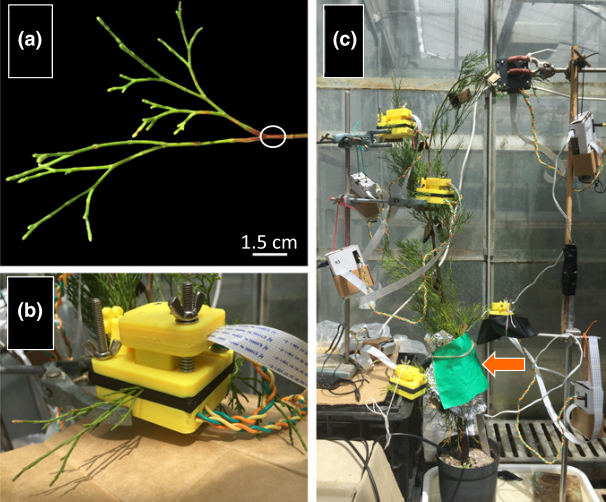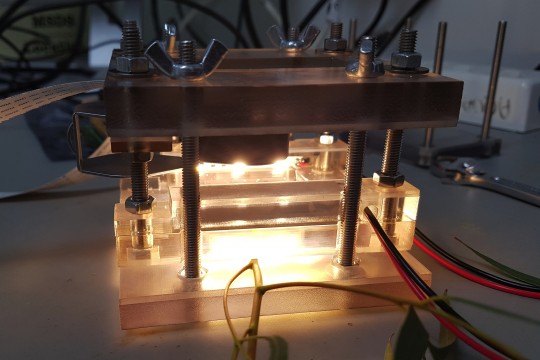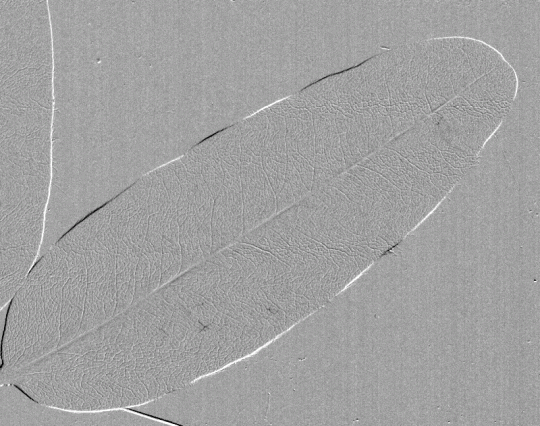Damage to the plant water transport system through xylem cavitation is known to be a driver of plant death in drought conditions. However, a lack of techniques to continuously monitor xylem embolism in whole plants in vivo has hampered our ability to investigate both how this damage propagates and the possible mechanistic link between xylem damage and tissue death. Using optical and fluorescence sensors, we monitored drought-induced xylem embolism accumulation and photosynthetic damage in vivo throughout the canopy of a drought-resistant conifer, Callitris rhomboidea, during drought treatments of c. 1 month duration. We show that drought-induced damage to the xylem can be monitored in vivo in whole trees during extended periods of water stress. Under these conditions, vulnerability of the xylem to cavitation varied widely among branchlets, with photosynthetic damage only recorded once > 90% of the xylem was cavitated. The variation in branchlet vulnerability has important implications for understanding how trees like C. rhomboidea survive drought, and the high resistance of branchlets to tissue damage points to runaway cavitation as a likely driver of tissue death in C. rhomboidea branch tips.

In vivo monitoring of drought-induced embolism in Callitris rhomboidea trees reveals wide variation in branchlet vulnerability and high resistance to tissue death
Download Article
Johnson, K. M., Lucani, C., & Brodribb, T. J. (2022). In vivo monitoring of drought-induced embolism in Callitris rhomboidea trees reveals wide variation in branchlet vulnerability and high resistance to tissue death. New Phytologist, 233(1), 207–218. https://doi.org/10.1111/nph.17786

